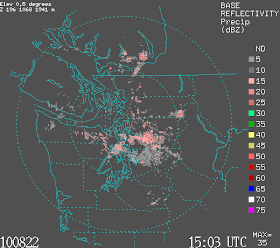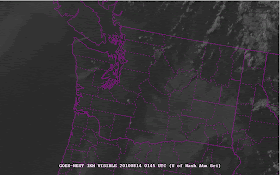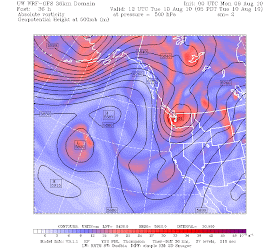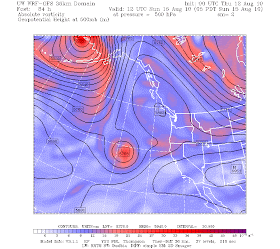
Chinook Pass (5400 ft) 72F

Sunrise 70F
On Saturday my family was looking to get away from the certain heat over the lowlands and a hike in the foothills would have been on the warm side--so I said lets head to Sunrise on Mt. Rainie. (elevation around 6400 ft). My expectation--at least 20 F cooler there and perfect for a pleasant hike (temperature typically decreases by 3.5 F per 1000 ft). Leaving late at 10 AM, I followed the temps from my car thermometer carefully--with warming as I entered the Kent/Auburn/
Enumclaw area into the upper 80s.

Rainier Area
Topo Map: O=
Ohanepecosh, S=Sunrise, C=Chinook Pass
But as wegained altitude on RT 410, temperatures began to drop and by the time I got to the White River entrance to the park the temps were in the mid 70s. BIG disappointment followed...the parking lot to Sunrise was so crowded everyone was turned away...so we headed to Chinook Pass for a very nice short hike at
Naches Peak, where the temperatures (5500 ft) were in the low 70s. WONDERFUL wildflowers.
Heading back to Sunrise at 3 PM they let us in and when we reached the 6400 ft high parking lot, the temperature was 70F-
-at the same time Sea Tac was near 95F. So going high is a good idea on a hot day, but Mt. Rainier also has a notorious
hotspot...a great place to go on cool days--particularly cool days with offshore flow--the
Ohanepecosh area. I love this place....you can see a very nice water fall (Silver Falls), view the greenish-blue river, check out a hot spring, and visit can ancient trees (Grove of the Patriarchs).
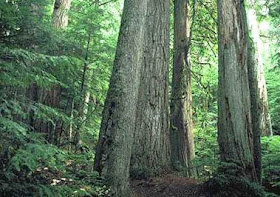
As you can see from the map above,
Ohanepecosh is relatively low--within an extension of the valley that passes through
Packwood. With offshore flow there is strong sinking into the valley (which brings compressional heating) and it BURNS. This weekend Ohanepecosh was 92F on Saturday and 97F on Sunday! I knew about the heat there and avoided it like the plague.
To show you have good are models are, below is a temperature map for 5 PM Saturday from our super high resolution forecasting system (
WRF with 4/3 km grid spacing)....you can see the warm tongue in that valley and the cooler temps immediately to the north where I was.

Today was cooler than expected by the
NWS and the media...although they had lots of clues--including the increase in the onshore pressure difference to roughly 2.5
mb late yesterday afternoon and Shelton's vigorous switch to southwesterly during the evening. Today was a nice step down in temperature (5-10F), but unfortunately that pesky BC wildfire smoke came in (image below..can you see the smoke?)

click to make bigger
Tomorrow will be a few degrees cooler, but the big change should be on Wednesday when we will drop back in to the 70s...yes, back to normal. So enjoy the last really warm day for a while. My tomatoes are FINALLY doing well.


















